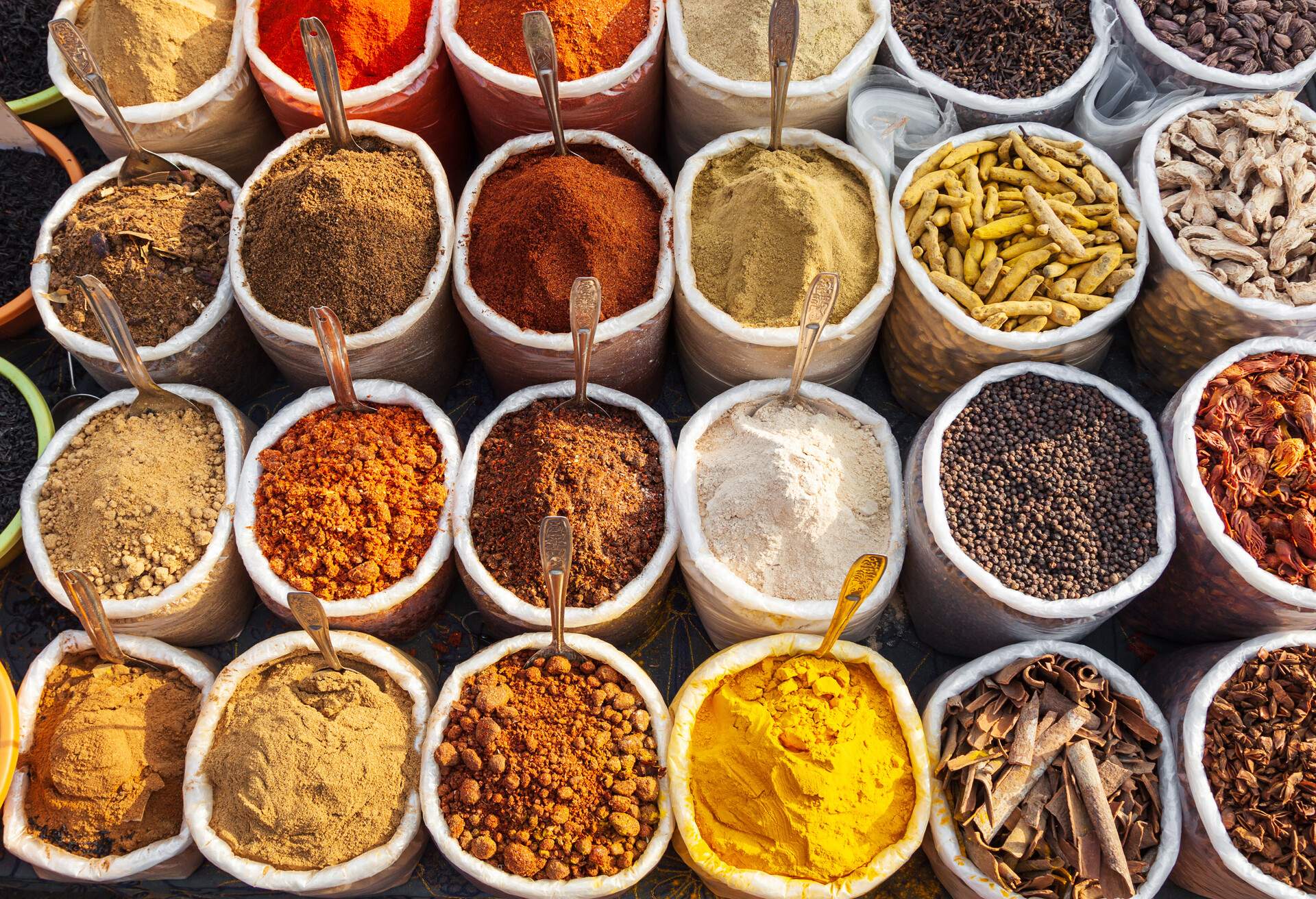When you think of British food, good old fish and chips and perhaps a delicious scone with cream and jam spring to mind. Both are very famous national dishes but they don’t necessarily speak for national food in the UK as a whole. Likewise, anyone who’s been to Scotland will have no doubt enjoyed traditional haggis with neeps and tatties, but what about the UK’s lesser-known dishes?
The best national food dishes in the UK
With different local takes on classic meals and, a few things we’ve imported from elsewhere in the past, the UK has a wealth of delicious dishes to try. From the quirky dinner plate compositions of Scotland, to the hearty northern dishes of England and not forgetting, the rustic comfort food from Wales that have all stood the test of time. We’ve scoured the UK to discover its most marvellous, and less famous dishes, that you simply have to try.
15. The Full English
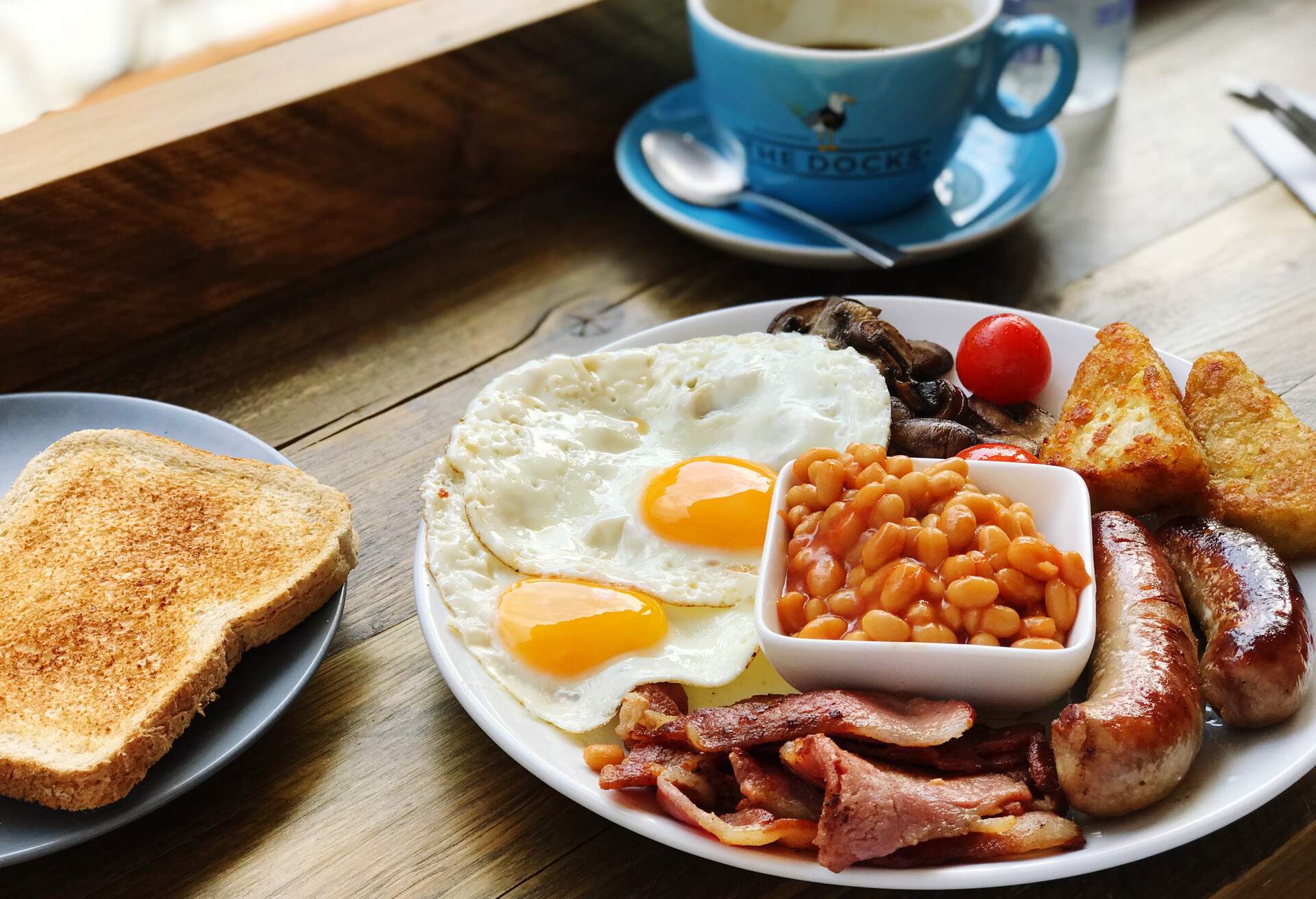
So popular this hearty breakfast dish is often served around the clock at restaurants and cafes across the UK. Usually consisting of fried eggs, bacon, sausages, mushrooms, beans and toast this greasy meal is one of the oldest traditions in English history, dating back to the 1300s.
You’ll find a few variations everywhere you go, including Black Pudding the further north you travel towards Scotland, as well as the odd inclusion of hashbrowns, and fried tomatoes. From small greasy spoon cafes to the poshest of restaurants, this dish can vary in size and quality but it’s best served piping hot and washed down with a mug of tea or orange juice.
14. Welsh Rarebit
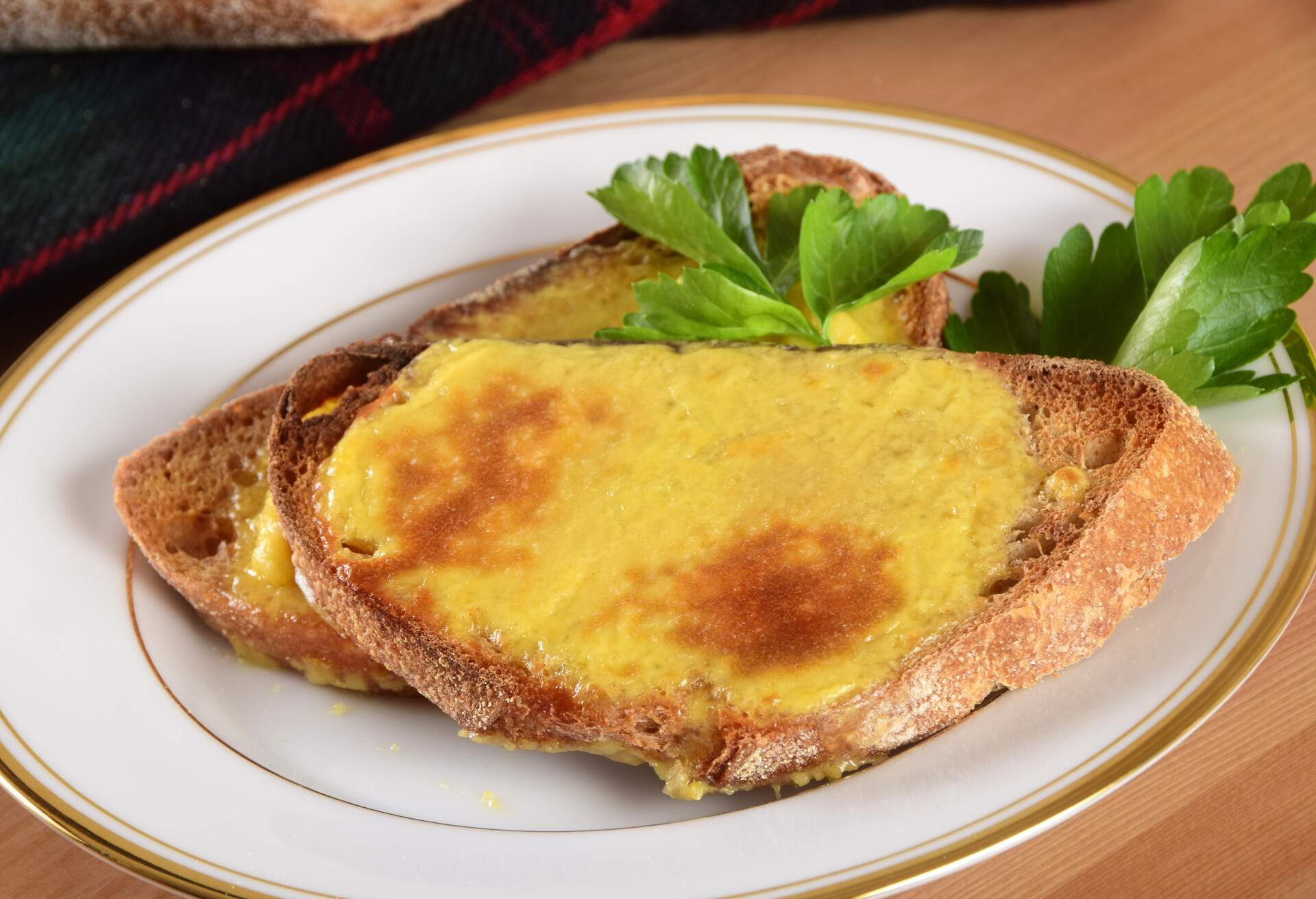
We know how it sounds and it sounds a bit like someone has cooked a cute little bunny for lunch. Despite the name, this dish does not contain any rabbits and was not created in Wales! It is instead, toasted bread topped with a hot cheese-based sauce in what is, essentially, a very gourmet grilled cheese (or toastie as it’s known here).
Commonly served with Worcester sauce, it can also be garnished with Cayenne pepper and paprika or, include a rich British ale in the sauce. It’s a great option for lunch and incredibly popular in many pubs around the UK so be sure to try it when you’re out and about.
13. Lancashire Hotpot
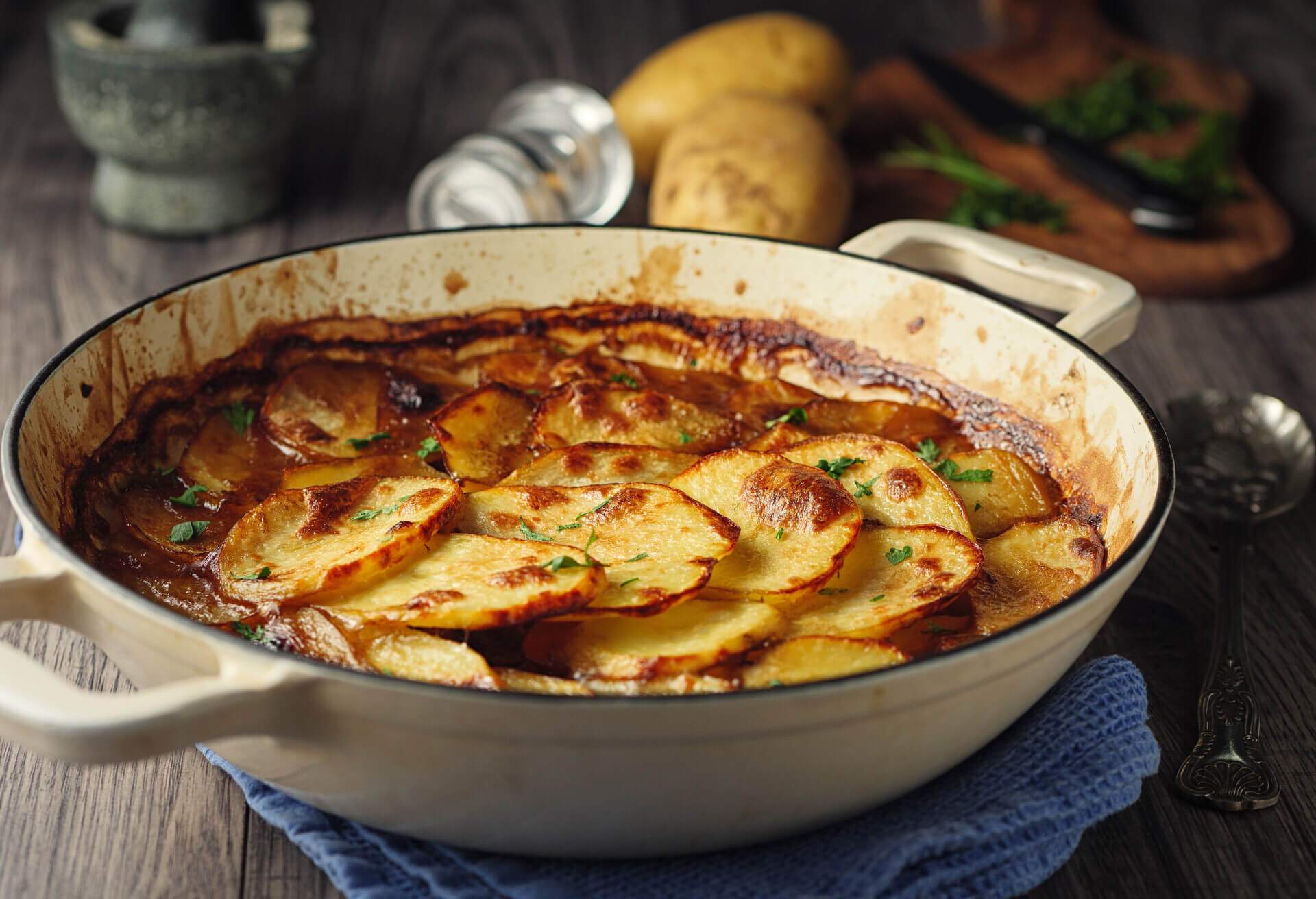
Possibly one of the most famous regional dishes the UK can boast. The dish was created when women began working in factories after the Industrial Revolution and needed to make the family a one-pot meal that could be left to cook all day. Traditionally made with mutton, today the filling contains a lamb and onion stew which is topped off with finely sliced potatoes.
The Cornish lamb hotpot deviant is also a popular version of this delicious British dish which is absolutely perfect for lunch for the family on a Sunday afternoon. Speaking of Sunday lunch…
12. The Sunday Roast

A roast dinner is a great British tradition, usually served on a Sunday lunchtime as families come together after a busy week. The meal, which usually consists of beef, roast potatoes, Yorkshire puddings, gravy, peas and carrots, can of course however, be enjoyed on any day of the week.
The meal rose to prominence in the 15th century during the reign of King Henry VII when the British consumed a lot of meat. The beef is often substituted for chicken or pork- and of course turkey during the festive season. You’ll find roasts available on Sunday at practically every pub and restaurant that’s worth it’s salt throughout the UK.
11. Bubble and Squeak
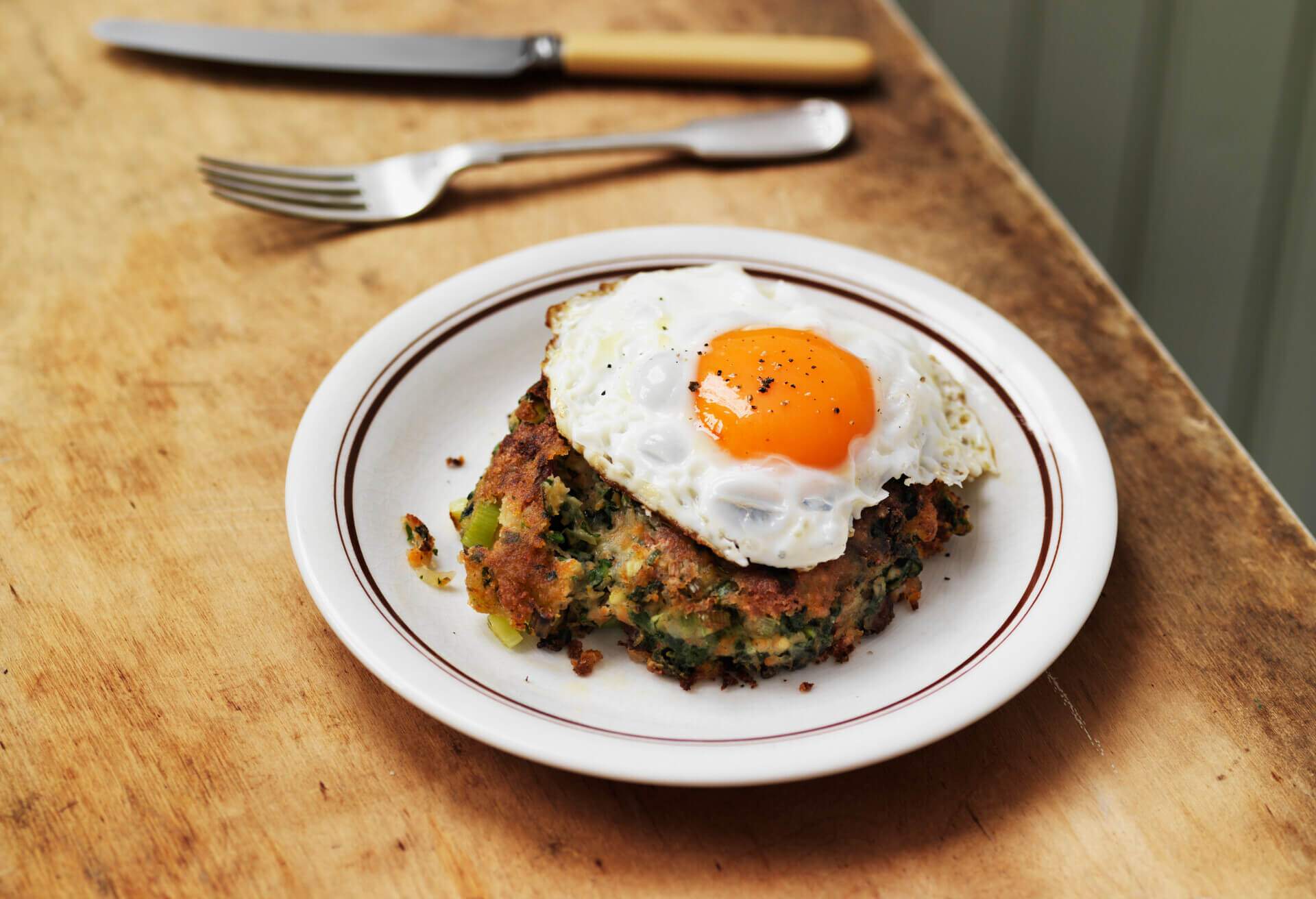
The name may sound cute but bubble and squeak is named for the noises it makes during preparation. Made with leftover potatoes and cabbage which are mashed together into patties and then pan-fried, it’s commonly served as a breakfast side dish but you can (and should) enjoy it at any time of the day if you so desire. It isn’t complete without a crispy fried egg on top to lather the yolk into and really enjoy all the flavours in the dish.
10. Shortbread
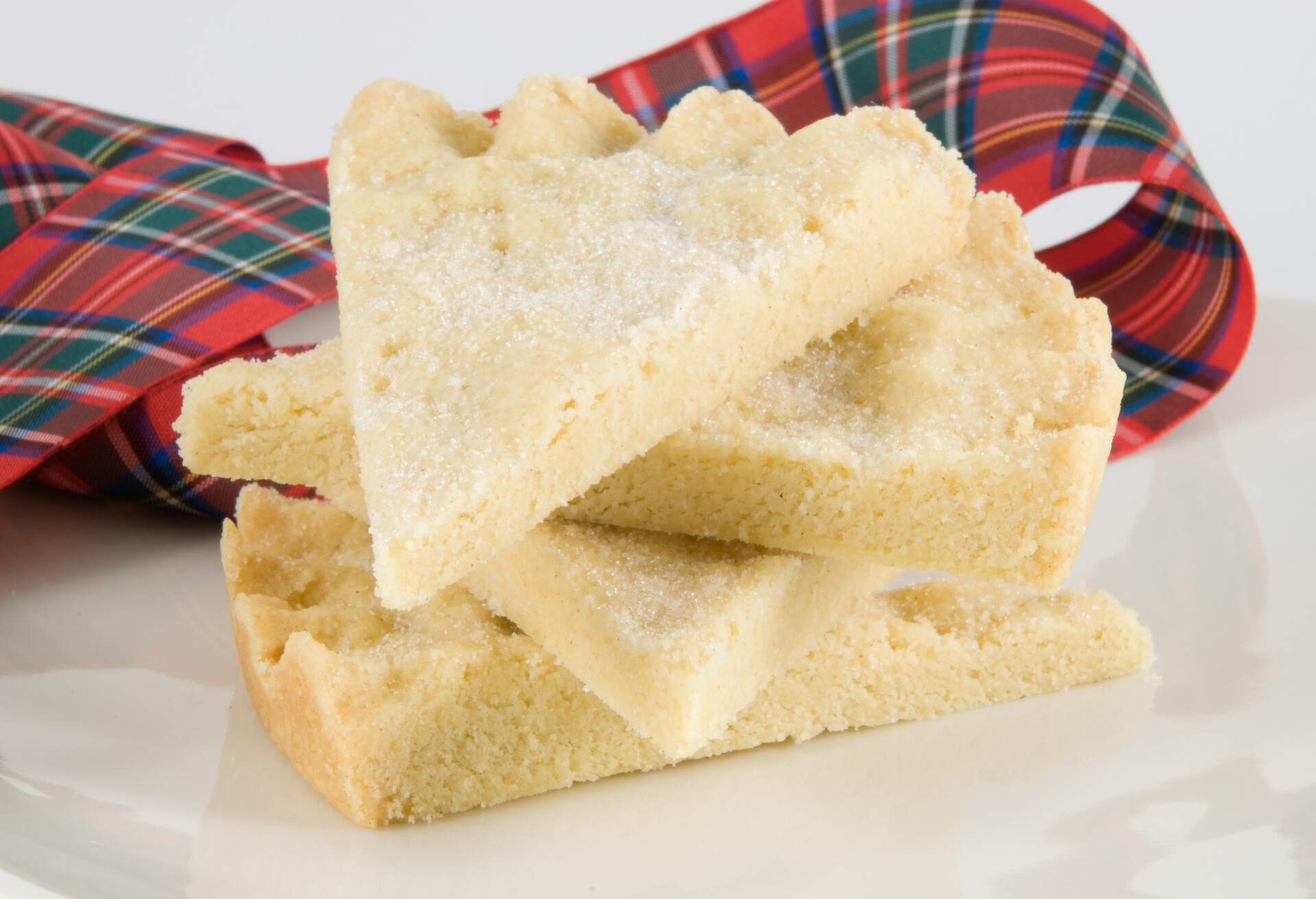
While there are links back to the 12th century, it’s believed Mary, Queen of Scots had a big part to play in the popularity of this beautiful buttery and sugary biscuit that rose to fame during the 16th century. The queen is said to have enjoyed the treats that were formed into the shape of Petticoat Tails but are now created in many different shapes. They are a staple of not only Scotland but the entire UK and they go especially well with tea!
9. Cornish Pasties
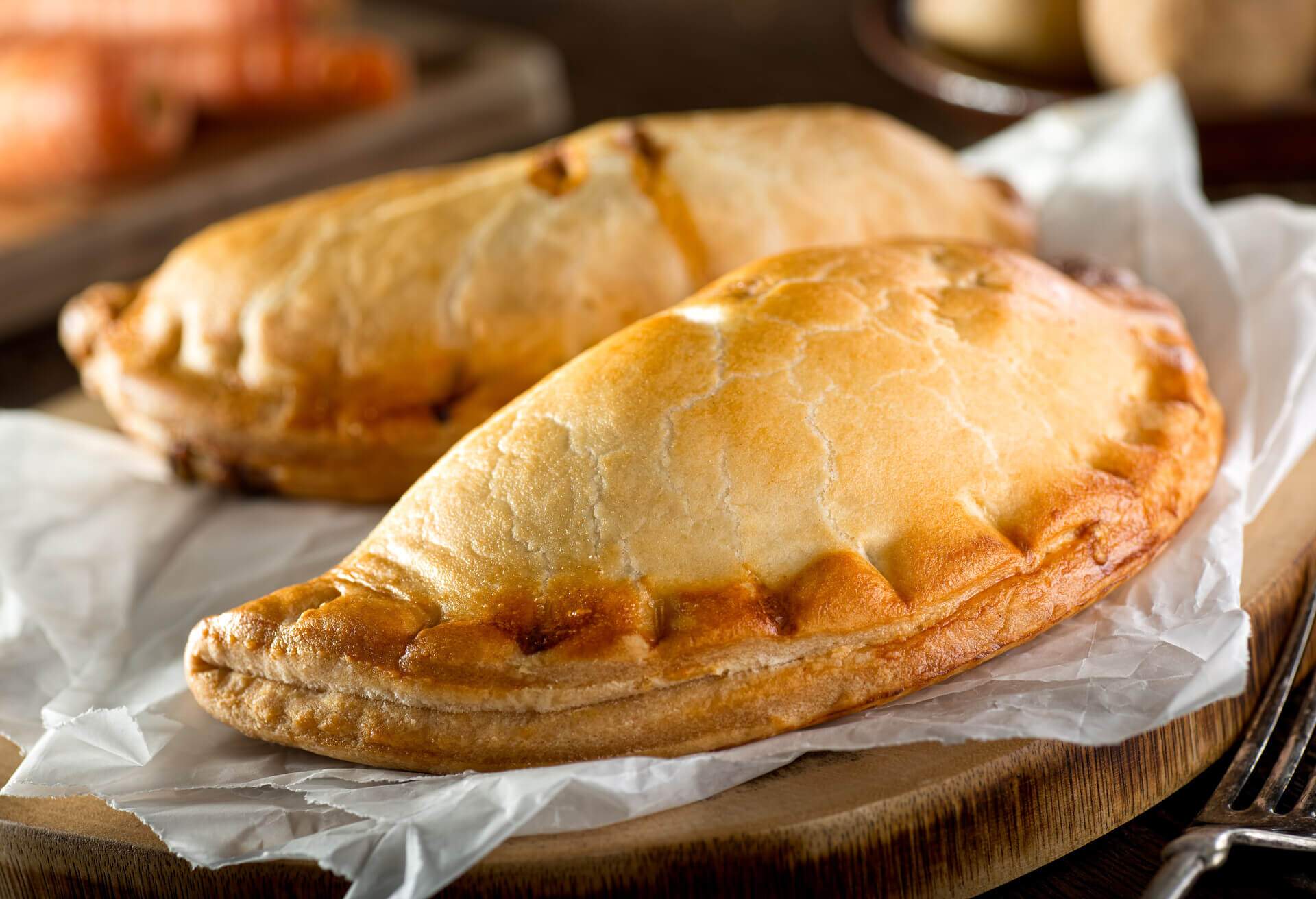
Available all over the UK, but the true ‘Cornish Pasty’ can only be enjoyed in Cornwall, where it must contain only beef, potatoes, swede and onions. It was traditionally a lunch for miners in Cornwall’s many coal and tin mines. Made with a robust shortcrust pastry that is thicker at one end, it allowed the miners to hold the pasty and then throw away the dirty crust at the end. Today, it is an often replicated but never bettered staple of British lunchtimes and can be found everywhere in the country with a variety of different, yet, delicious fillings.
8. Scouse
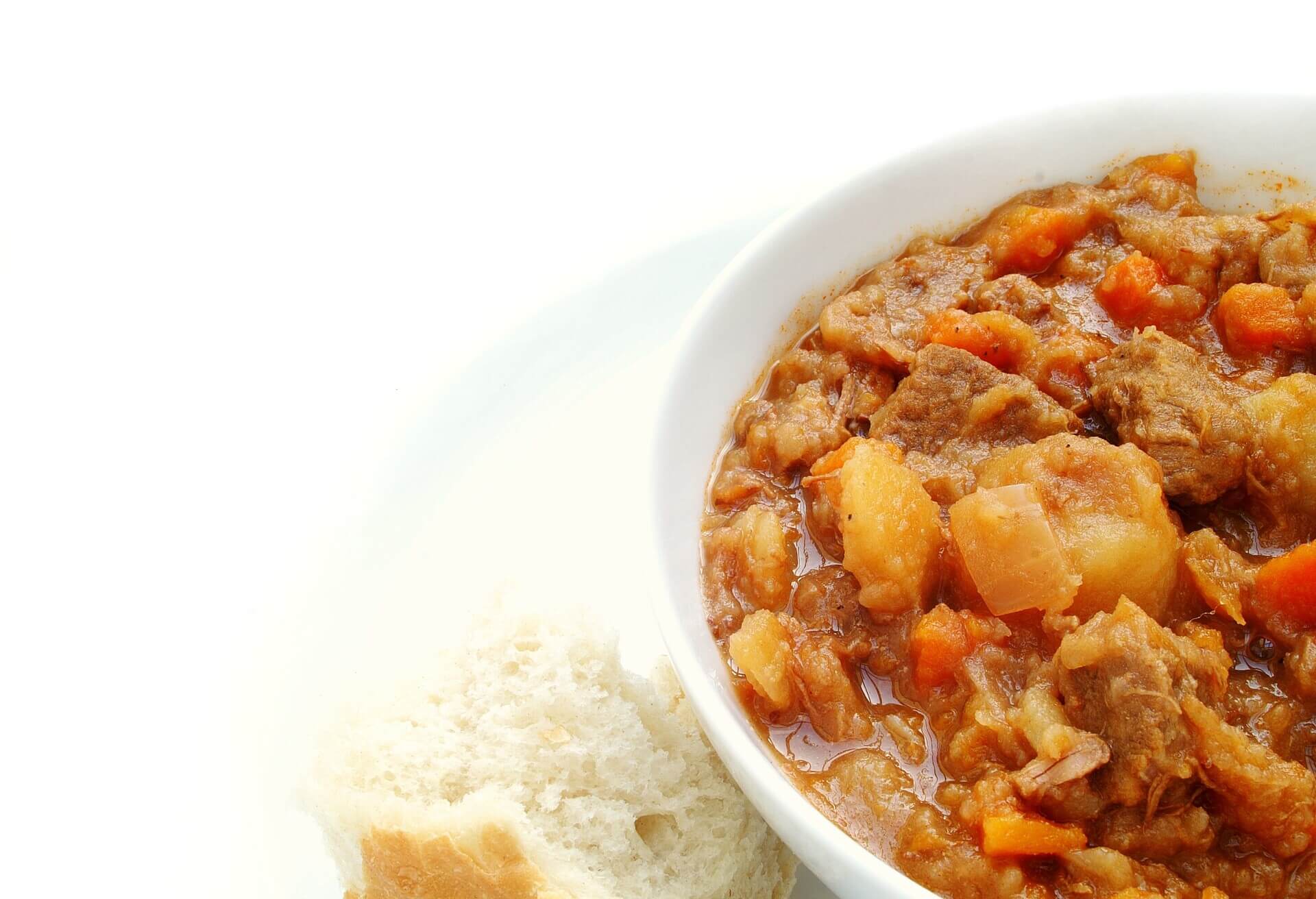
If you just thought ‘scouse’ was a familiar name for a person from Liverpool, you may be surprised to find out the term originates from a local speciality. Scouse, also known as lobscouse, is a variation of the Norwegian Lapskaus. It is a type of stew that has been enjoyed in the city for hundreds of years, made with beef, onion, carrot and potato, cooked in a rich stock. Although you won’t see it on menus outside of the city, it’s still common in pubs and restaurants in Liverpool itself.
7. Curry
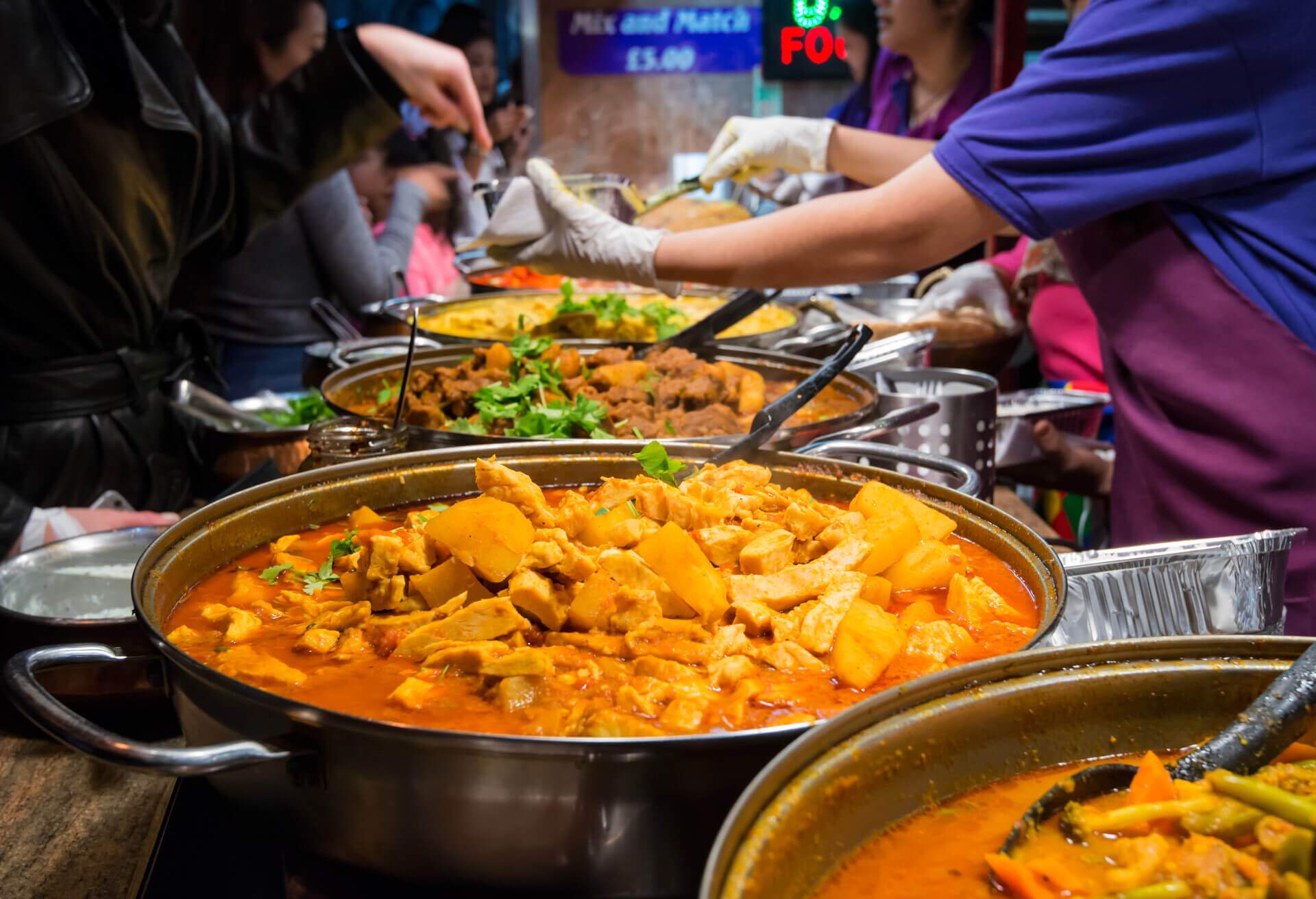
Cuisine from the Indian subcontinent is extremely popular in the UK, with variants such as Vindaloo and Korma ranked among the country’s most popular national dishes. Some curries are actually said to have originated not in Asia, but in Britain, where South-Asian chefs adapted dishes for their UK restaurants. This includes the Balti and the Tikka Masala, as well as the aforementioned Vindaloo and Korma, although, no one is really sure. The best places to try Indian, Pakistani or Bangladeshi cuisine in the UK are Glasgow, London, Birmingham and Bradford.
6. Whitstable Oysters, Kent
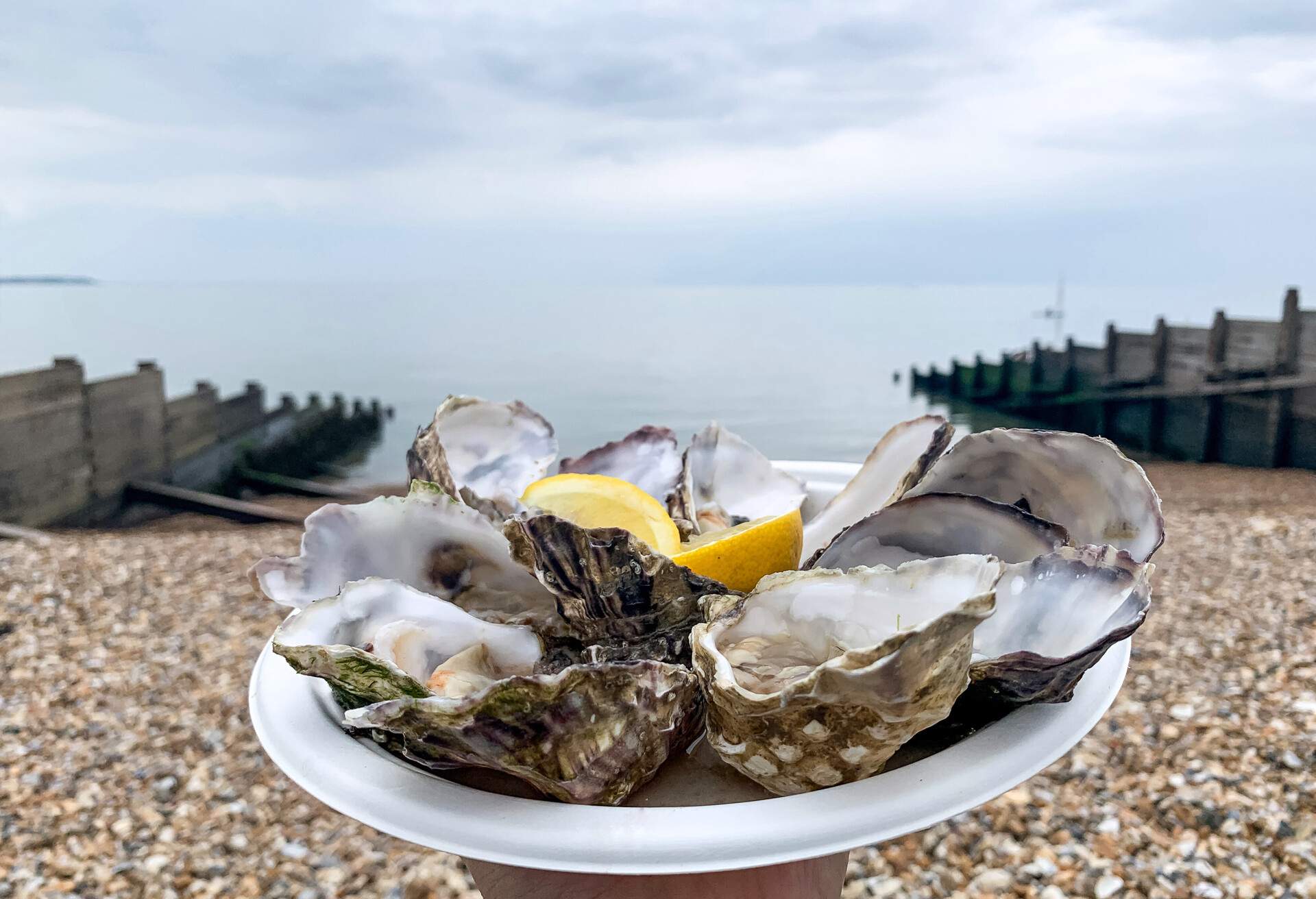
Each year, thousands of people flock to Whitstable to try the town’s famous succulent and fatty oysters which have been harvested there since Roman times. They are still a key source of income for the town and the many people who work in oyster business. While the native oysters are pretty hard to get your hands on, locally grown rock oysters are readily available.
5. Eton Mess
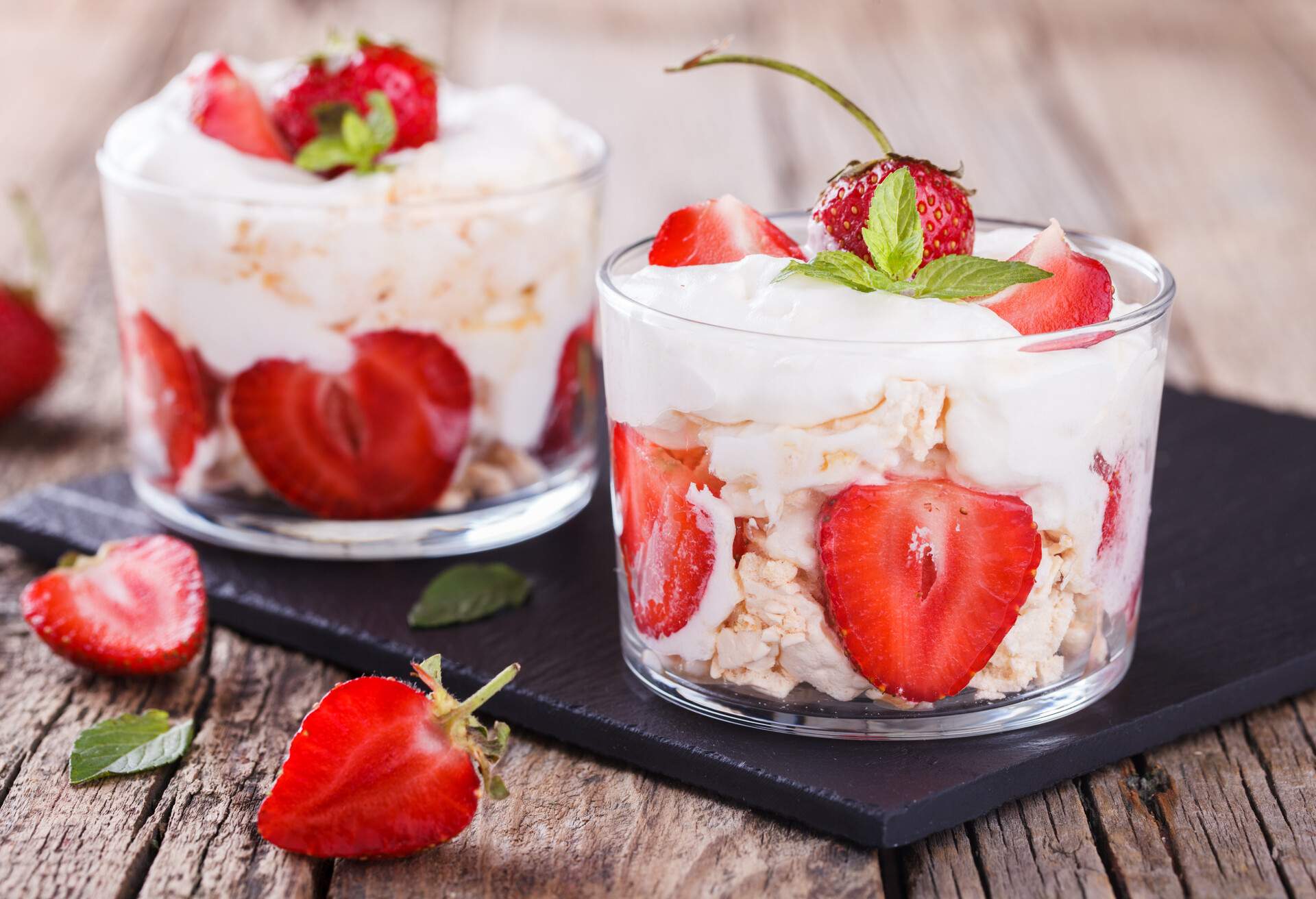
Receiving its first ever mention in print 1893, the classic dessert of meringue, strawberries, whipped cream and other berries originates from Eton College in Berkshire. It’s said a classic strawberry meringue and cream pudding was dropped on the floor at the annual cricket match against Harrow School. Rather than waste the food, the mixture was scooped up into small bowls and huzzah, the Eton Mess was born and became a staple of the British summertime menu.
4. Scotch Eggs
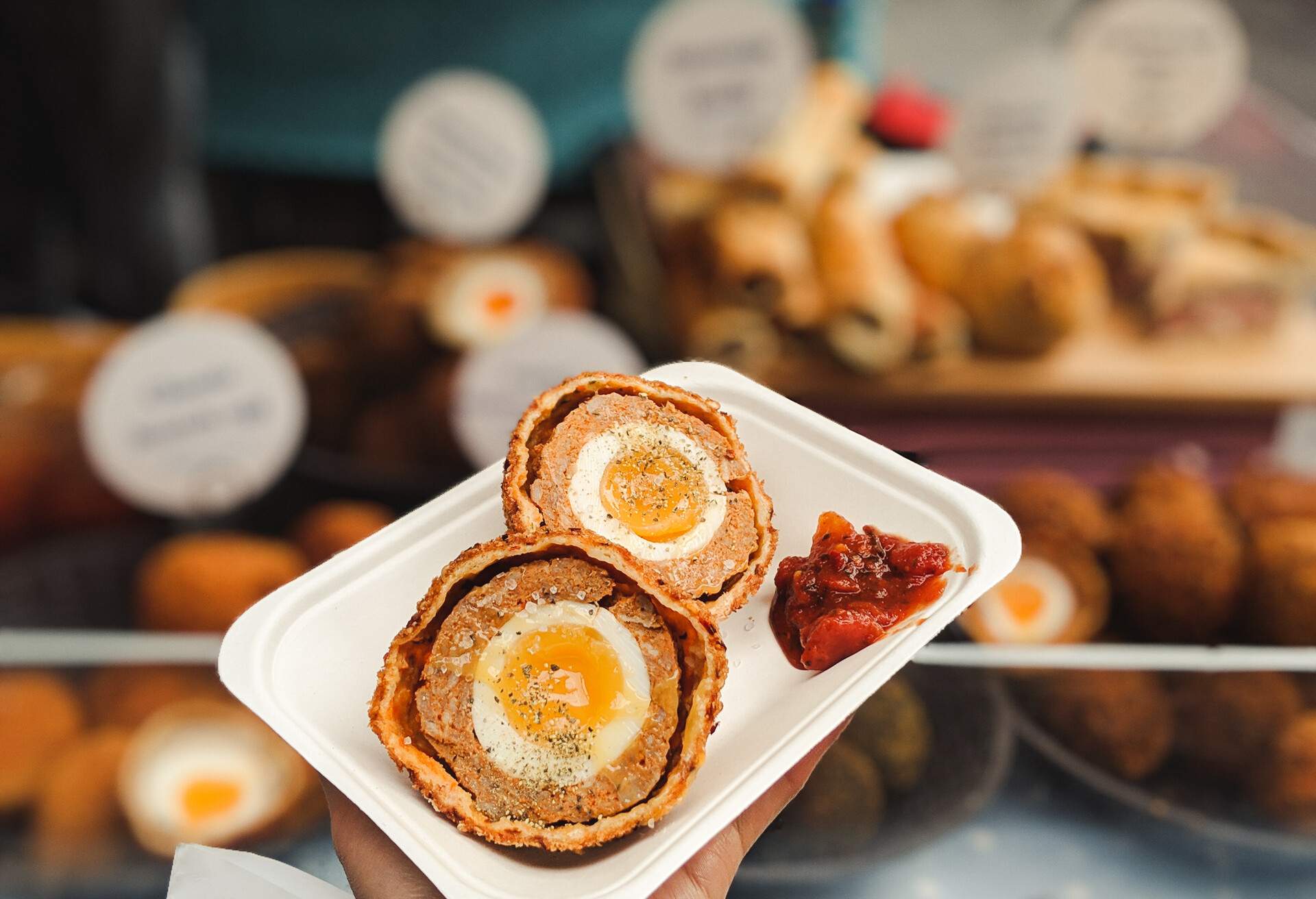
The Scotch Egg – a boiled egg, wrapped in sausage meat, coated in bread crumbs and deep-fried – was invented in the 19th century in Whitby, Yorkshire. However, it wasn’t always this combination as initially, a creamy fish paste coated the egg, instead of sausage meat.
It’s thought the delicacy, which is often served with a mustard dipping sauce, was named after William J. Scott & Sons, a restaurant that sold them. Today it can be found everywhere, from pre-packed boxes in supermarkets to freshly made delicious morsels in bakeries and restaurants everywhere.
3. Toad-in-the-Hole
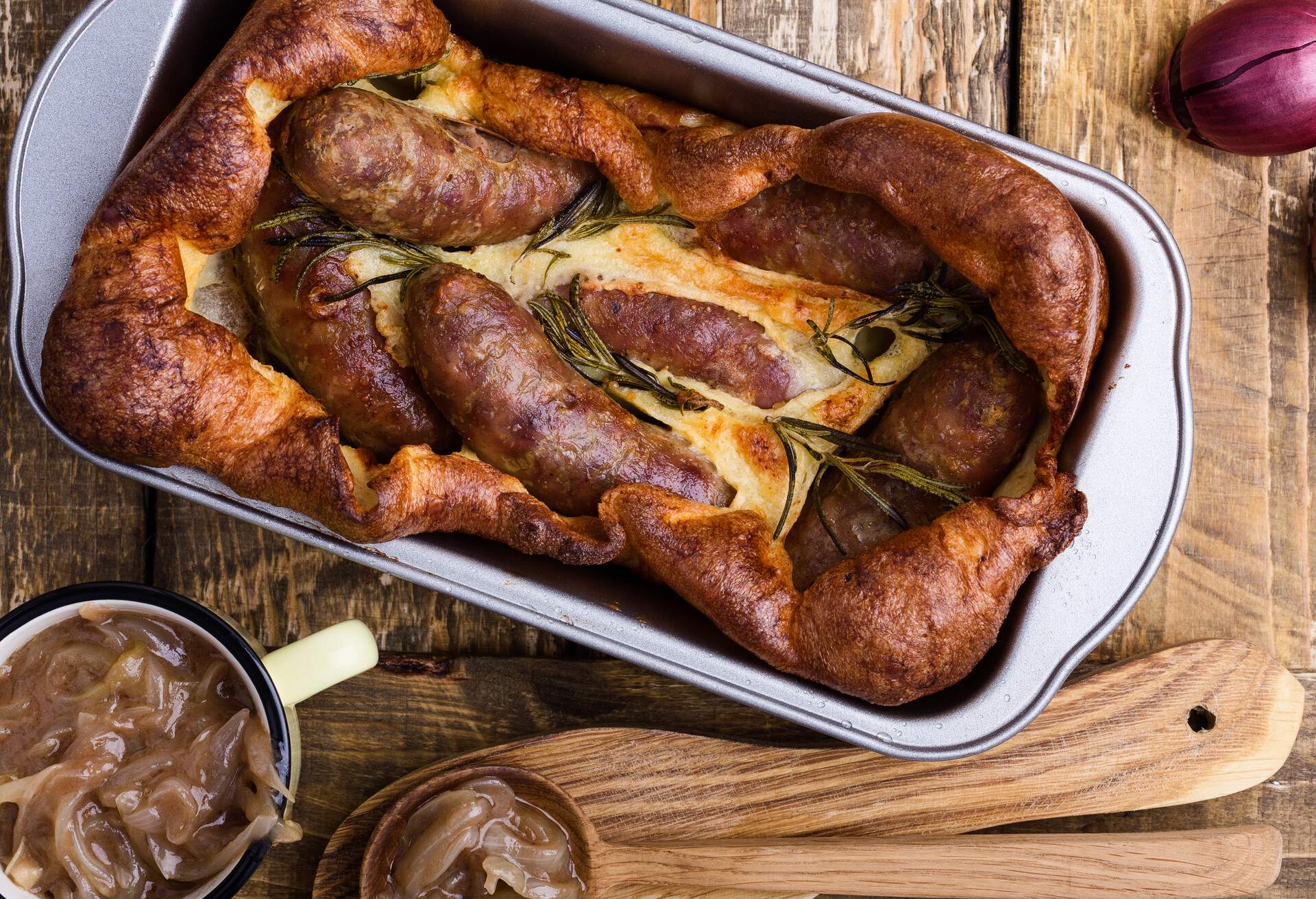
A delicious combination of sausages baked in Yorkshire pudding batter, this hearty dish was invented in the 18th century when batter puddings were popular because it was a cheap way of making the meat go further. It is usually served with gravy and peas but the sausages can be substituted for other meat including beef, kidneys and mutton.
There is a belief the dish was named by a chef at a golf course in the town of Alnmouth, Northumberland. During a competition a golfer saw his ball pop up out of a hole by an angry toad who was sleeping inside. It’s said the chef created the dish of sausages poking out of the batter to resemble this funny moment.
2. Spotted Dick
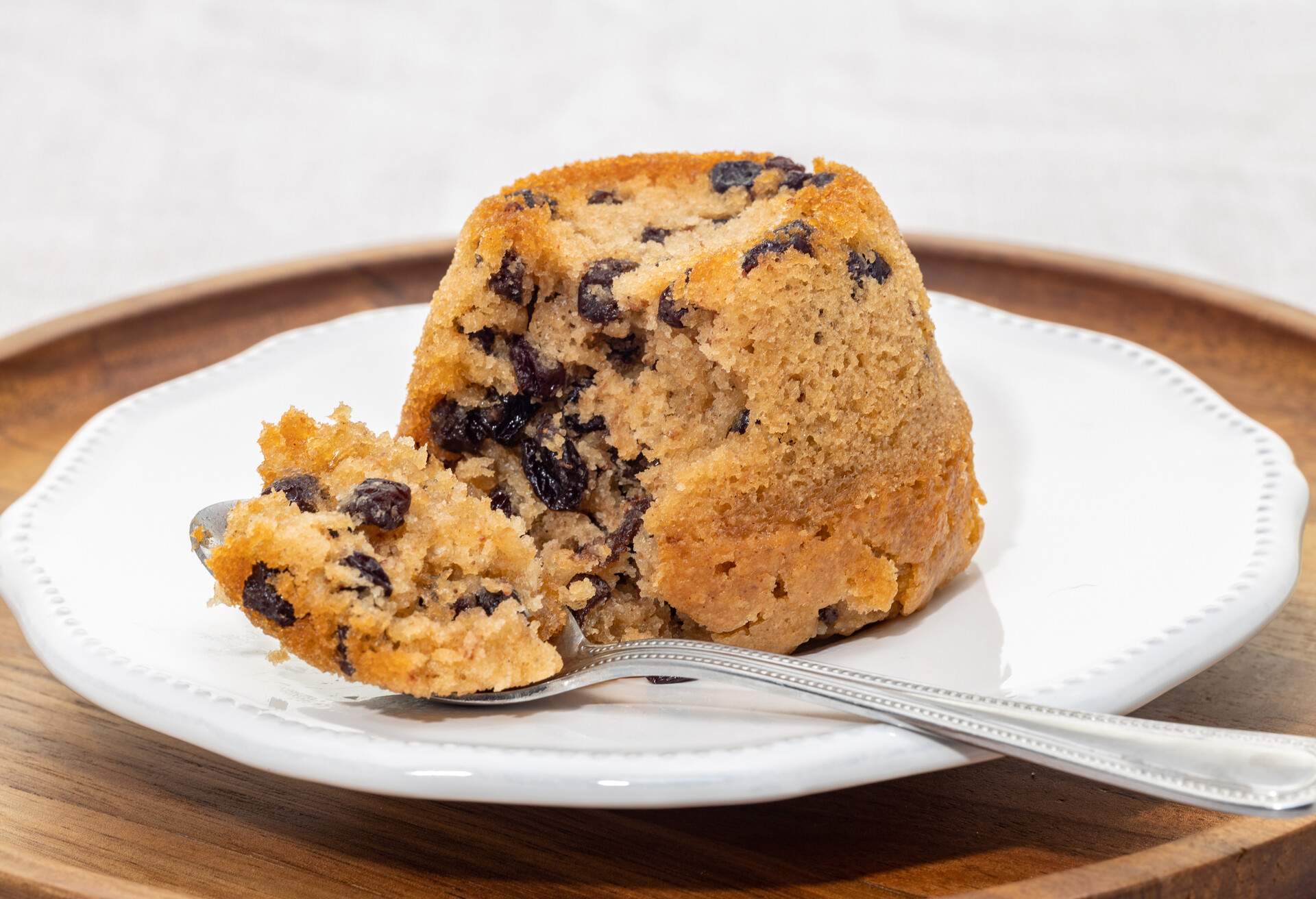
Another tradition to emerge from the pudding-heavy Victorian era, this spongy, boiled and steamed pudding contains suet instead of butter. Delicately flavoured with lemon, the dish was named after the currants inside which look like spots although, we don’t blame you for getting the wrong idea about what the name implies!
The dish is not too sweet but you can change that with the custard that is commonly served with the pudding. The ‘Dick’ part of the name is believed to have come from the shortened Anglo Saxon name for pudding: Puddick. The first recipe can be traced back to 1849 and although it isn’t as popular in Britain as it was then, it is still an exceptional national dish.
1. Bakewell Tart

The 20th century saw the original Bakewell Pudding deviated into a smaller, snack-size treat that we know and love as the Bakewell Tart. It is a beautiful combination of shortcrust pastry baked on top of layers of jam and frangipane.
Usually there are flaked almonds on top too. The tart, which can be served round or as a slice of a pie, is often served with clotted cream. It isn’t a real Bakewell Tart without it’s signature cherry placed in the middle of the icing and we won’t have it otherwise.




